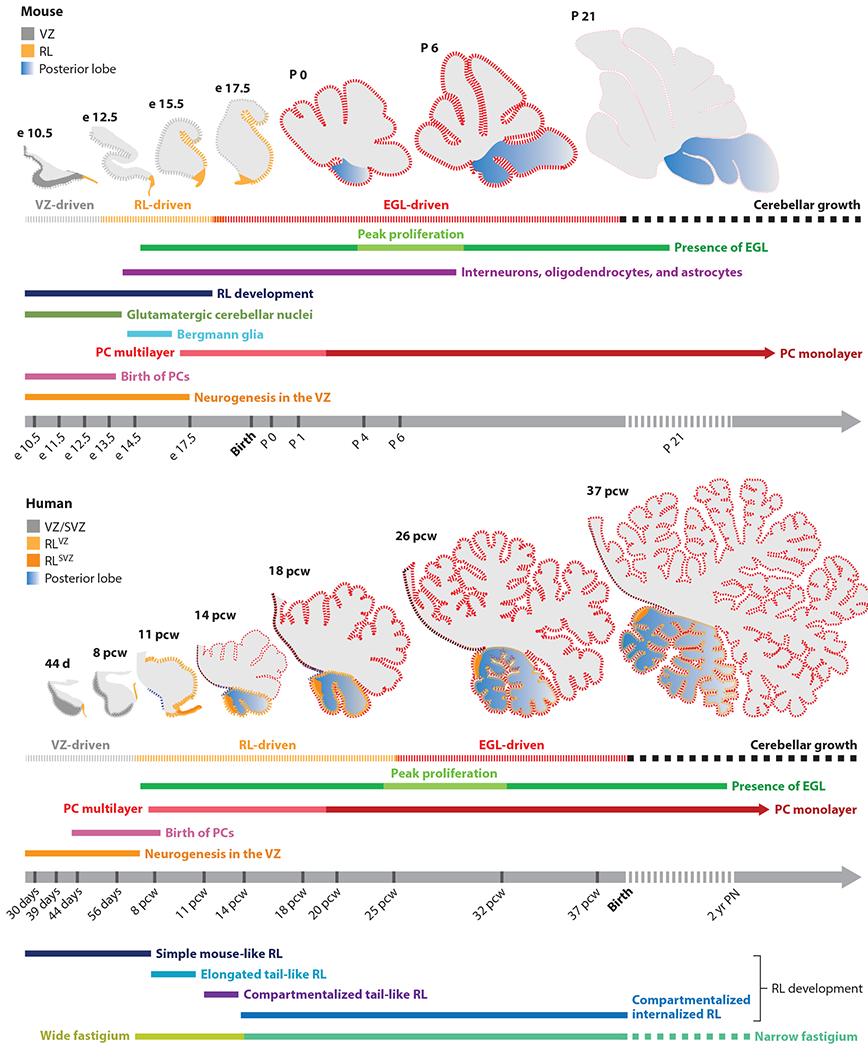Figure 2.

Timeline of mouse and human cerebellar development. Cerebellar neurogenesis in the mouse and human is driven by three progenitor zones: two primary zones, namely the VZ and RL, and one secondary zone, the EGL. Development of each cell type is indicated by a unique colored line. In mice, cerebellar development takes place over a period of approximately 30–35 days, with a significant portion occurring in the postnatal period. In humans, cerebellar development is protracted, taking place over 2–3 years, beginning approximately 30 days post-conception, with all major developmental events taking place in utero. Peak progenitor proliferation is indicated by thickened dashed lines. In both species, VZ- and RL-driven growth precedes an EGL-driven increase in cerebellar volume and foliation. However, unlike in the mouse, where RL presence is transient, in humans, the RL is spatiotemporally expanded and promotes growth and maintenance of the posterior lobe throughout gestation. Abbreviations: e, embryonic day; EGL, external granule layer; P, postnatal day; PC, Purkinje cell; pcw, postconceptional week; PN, postnatal; RL, rhombic lip; SVZ, subventricular zone; VZ, ventricular zone.
